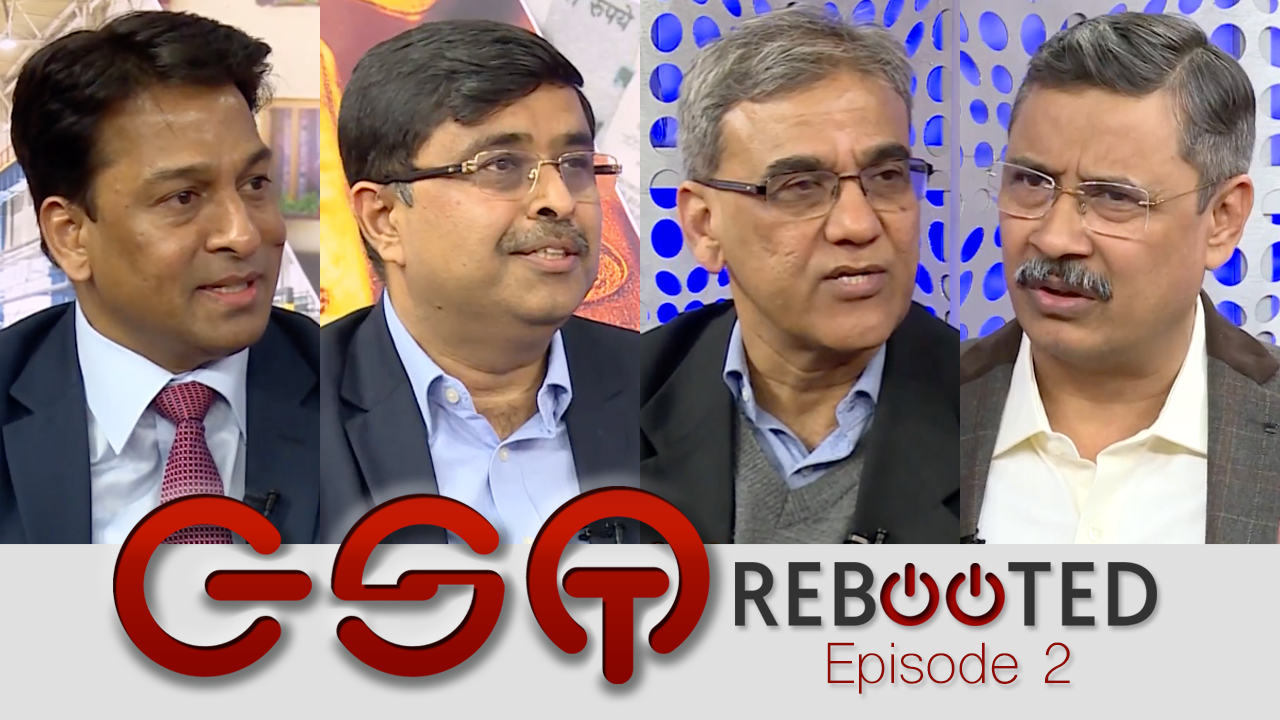
| 2017-TII-INSTANT-ALL-512 | 07 December 2017 |
 |
|
|
CASE LAW KGK ENTERPRISES Vs ACIT: JAIPUR ITAT: (Dated: November 28, 2017) Income Tax - Sections 14A, 92B and 92CA(3) & Rules 8D and 10A(d). Keywords: ALP - International transaction - Business promotion expenses - External CUP - Gross interest expenses - Internal CUP - Notional interest - Outstanding receivables - OECD TP guidelines - PLI & Uniform policy. The Assessee-company, engaged in the business of manufacturing cut and polished diamonds. The Assessee had filed its return for the relevant AY and selected TNMM as the most appropriate method to benchmark its transactions relating to purchases and sales. On reference made by the AO, TPO examined the international transactions and arm's price so determined by the Assessee. The Assessee had not proposed any TP adjustment in respect of the said transactions. Hence, the Assessee's TNMM method of determination of ALP was accepted by the TPO. The TPO observed that the Assessee had substantial amount of outstanding receivables from the AEs which remained outstanding for a long period of time and no interest was charged on such amount. The TPO decided to examine the said transactions by invoking his powers u/s 92CA(2A) and 92CA(2B). In response to the issued SCN, the Assessee filed detailed submissions which were considered but not found acceptable by the TPO. The TPO referred to the provisions of section 92F(v) and rule 10B(2)(c), and held that the TP regulation was to be applied keeping in mind the overall scheme of the tax payer's business arrangements. The Assessee had provided benefit to its AEs by way of advancement of interest fee loan in the garb of delay receipt of receivables hence, the Assessee had incurred cost in connection with a benefit and services provided to the AE by way of delay receipt of receivable, accordingly, the delay in receipt of receivables was held to be an international transactions u/s 92B(1) r/w section 92F(v). The ALP of the interest on the outstanding receivable was determined by the TPO at Rs. 1,87,41,073/- applying CUP method. Based on the TPO order u/s 92CA(3), the AO made an addition of Rs. 1,87,41,073/- was made to the Assessee's total income. On appeal, the CIT(A)'s deleted of notional interest adjustment in respect of outstanding AE-receivables for Assessee for AYs 2007-08 to 2009-10. On appeal, the Tribunal held that, Whether outstanding receivables from AEs prior to amendment of Finance Act, 2012, can be considered as 'international transaction' u/s 92B - NO: ITAT Whether any ALP adjustments in the name of notional interest can be made on account of delay in receivables from AEs, when is complete uniformity in the act of Assessee in not charging interest from both AEs and non-AEs - NO: ITAT + one issue which the TPO has emphasized time and again in his order, right from the SCN to her final analysis, is whether the tax payer could have extended such facility to any unrelated party similar to that of the AE without charging adequate compensation. In response, the Assessee submitted that it has extended similar credit facility to non-AEs without charging any interest. The TPO though acknowledged the said fact but refused to accept the same. Under the CUP method which has been invoked by the TPO, the TPO is required to evaluate the arm's length character of a controlled transaction by comparing the price and conditions to the price and conditions of similar transactions between the taxpayer and an unrelated party (internal CUP), or between two unrelated parties (external CUP). The immediate question that comes to our mind is that where internal CUP is available, would there be a necessity to examine the external CUP and can the latter be held to present a more reliable outcome in the facts of the present case. We find that the same was appreciated by the CIT(A) who on appeal by the Assessee, has granted relief to the Assessee company by deleting the notional interest charged for delay in realization of export selling invoices; + in the instance case, what has to be examined is whether outstanding receivables in relation to sale transactions with the AEs reflects a pattern over a period of time or is just restricted to the relevant AY that would justify a TPO concluding that the figure of receivables beyond 145 days constitutes an international transaction by itself. From perusal of records pertaining to AY 2007-08, 2008-09 and 2009-10, it is observed that the Assessee has outstanding receivables beyond 145 days in respect of its export sale transactions with its AEs though the quantum of receivables, period of delayed realization may vary in each of these years. In each of these years, the TPO has also categorized these outstanding receivables as an independent transaction and has proposed a TP adjustment towards interest on such outstanding receivables beyond 145 days. However, at the same time, there is not enough material on record which throw light on the exact reasons for such delay in receivables and hence, in view of the same, it cannot be stated with certainty that there seems to be some pattern in delayed realization of export proceeds beyond stipulated credit period and continuing debit balance in the account of the AEs which intends to benefit the AEs and amounts to an international transaction in terms of explanation to section 92B; + it would be equally relevant to examine another contention raised by the AR that such amendment by way of an explanation to section 92B is an amendment to a substantive law as it has resulted in enhancement of the scope of international transactions as envisaged u/s 92B and such amendment, though stated to be clarificatory, should thus be treated as effective from AY 2013-14 onwards and is not applicable for the AY 2007-08 and even to two subsequent AYs ie, 2008-09 and 2009-10 which are under consideration. In the pre-amended legislative scenario i.e, prior to insertion of the explanation to section 92B, which will be applicable in the instant case, the TP provisions have been judicially interpreted and the matter is no more res integra. In the present case, the sales to AEs constitute 64% of total sales made by the Assessee and at the same time, there are sales to non-AEs which equally constitute a big percentage at 36% of the total sales. The AR has contended that in accordance with the company's policy and also in accordance with practice in the Gems and Jewellery Industry, no interest was charged on delayed realization of sale proceeds from both AEs and non-AEs and uniform credit period of 145 days has been granted to both associated enterprises and non-AEs. It was further contended that average period of realization from non-AEs is slightly more than the average period of realization from the AEs and in that sense, no benefit could be said to have been provided to AEs over and above the non-AEs. In this regard, the CIT(A) has returned a finding that the Assessee had adopted uniform policy of not charging interest on delayed realization on sale proceeds from both the AEs and Non-AE customers. There is complete uniformity in the act of the Assessee in not charging interest from both the AEs and non-AEs and the average period of realization of the export proceeds is titled more in favor of non-AEs and thus cannot be said to benefit the AEs vis-a-vis non-AEs; + the TPO had emphasized time and again in his order, right from the SCN to her final analysis, as to whether the tax payer could have extended such facility to any unrelated party similar to that of the AE without charging adequate compensation. Interestingly, in this regard, the TPO acknowledged the fact the Assessee has extended similar credit facility to non-AEs without charging any interest but he refused to accept the same and went ahead and computed ALP adjustment by way of notional interest applying CUP method. It is this fallacy in stand of the Revenue that we find is not in consonance with the transfer pricing regulations. The whole exercise of ALP adjustment is to neutralize the impact of inter-se relationship between the AEs and what is therefore relevant is not just to examine whether there is delay in realization of export proceeds from the AEs but delay in realization of export proceeds vis-à-vis similar situation with non-AEs. And on the same footing, what is therefore equally relevant is not just to examine whether the Assessee is charging any interest for delay in realization of export proceeds from the AEs but charging interest for the delay in realization of export proceeds vis-a-vis similar situation with non-AEs. We find that the same was rightly appreciated by the CIT(A) who has granted relief to the Assessee company by deleting the notional interest for delay in realization of export proceeds. The said action of the CIT(A) is therefore in consonance with the legal proposition laid down by the Bombay High Court in case of Indo-American Jewellery and consistent view taken by various Coordinate Benches including Jaipur Benches; + the TPO has applied CUP method for determining the ALP adjustment towards the notional interest on delay in realisation of export proceeds. Under the CUP method, the TPO is required to evaluate the arm's-length character of a controlled transaction by comparing the price and conditions to the price and conditions of similar transactions between the taxpayer and an non-AE (internal CUP), or between two non-AEs (external CUP). Where there are real transactions of similar nature undertaken by the Assessee with non-AE, in our view, the same will reflect a better and more reliable comparison as compared to hypothetical transactions between two non-AEs. In other words, in the instant case, internal CUP would provide a more reliable comparison than an external CUP which has been applied by the TPO. Given the undisputed fact in the instant case that there is complete uniformity in non-charging of interest on delay in realization of export proceeds and the average period of realization of the export proceeds is titled more in favor of non-AEs, there cannot be any ALP adjustment even applying the CUP method as done by the TPO. Under the TNMM method which has been applied by the Assessee to benchmark its international transaction of export of goods, extending credit period for realization of sale proceeds beyond the prescribed period to the AE, where the same is considered as an international transaction, is a closely linked transaction with the transaction of export of goods and therefore, the same cannot be treated as an individual and separate transaction which will require an independent benchmarking. The same is in consonance with Rule 10A(d) as well as the concept of aggregation of closely linked transaction supported by the OECD TP guidelines; + it is not the case of the Revenue that where such a transaction is aggregated with transaction of extending credit period for realization of sale proceeds beyond the prescribed period to the AE, it will require any further ALP adjustment than what has been determined by the Assessee and accepted by the TPO. In the instant case, the international transaction of export of goods has been duly benchmarked on TNMM basis and the Assessee has reported its operating margin of 6.15% as against the comparable updated margin of 6.00% which has been accepted by the TPO and thus not in dispute and thus doesn't require any further ALP adjustment. Assessee's appeal allowed |
Thanking you for your support and cooperation. Regards, TIOL HOUSE, 490, Udyog Vihar, Phase - V |
